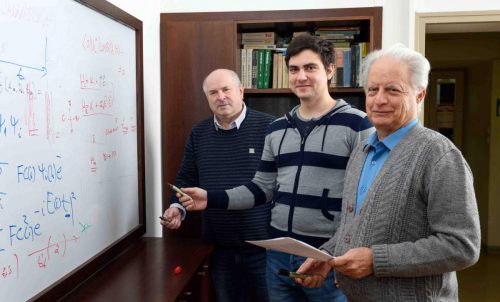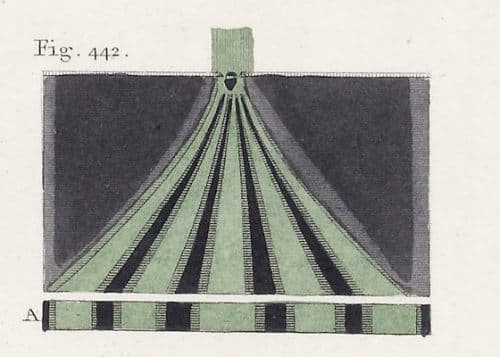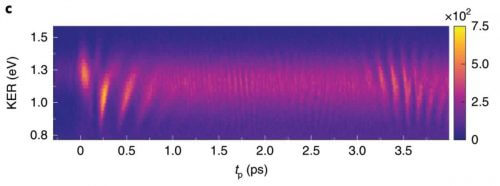Prof. Ilya Aberbuch, Prof. Yechiam Pryor and research student Ilya Totunnikov from the Department of Chemical and Biological Physics at the Weizmann Institute of Science, together with their partners from Prof. Jane Wu's group at ECNU University in Shanghai, China, used cutting-edge measurement methods to combine the two initiations, and to examine whether It is possible to create a quantum echo phenomenon within a single molecule.

You can start the story like this: a group of runners sets off at the same time (according to the sound of the triggerman's gun). Naturally, each of them runs at a different pace than their friends, so that after a while gaps open up between them and it seems as if they are randomly scattered around the running track. Now, let's say the starter fires again, and at that moment, all the runners start running in the opposite direction - exactly at the same pace they were running forward. Reason suggests that after some time they will all return to the starting line at exactly the same time. Checking if everyone actually made it back will provide information about events (interactions) that may have happened to the runners during their run and prevented them from completing the task. Such a phenomenon cannot, of course, occur in the world of human runners, but when it occurs in the quantum world of photons, or electrons, physicists call it an "echo". Since Erwin Hahn discovered the first "echo" in systems of spins (1950), many more "echoes" have been discovered in different physical systems.
But you can also start the story like this: in 1801, the English physicist Thomas Young performed an experiment that changed the face of physics. In the experiment, which was nicknamed the "two cracks experiment", he sent a beam of light into a barrier where two cracks had opened. On another panel, placed behind the first panel, a configuration of entanglement was discovered, which concluded a long debate, and showed unequivocally that light propagates as waves (although it also has a particle appearance). In other words, light has a particle nature (photons) and at the same time is also a wave that is "everywhere". This is, of course, a phenomenon observed in systems that included a great many photons. Richard Feynman, winner of the Nobel Prize in Physics in 1965, asked: "What would happen if we performed the two-slit experiment with only one light particle or one electron? Will he, really, go through both cracks at the same time (and thus get into trouble with himself)?” Feynman was quick to reply, saying that although this is a main phenomenon in quantum theory, we will not be able to perform such an experiment anyway, so there is no need to hold our breath waiting for an answer. But, predictions of the type "we will never succeed" are often mistaken in medium time frames (not to mention long time frames). And so, about 30 years ago, Japanese scientists were able to clearly show that even a single electron (like one star alone, which dares, according to Natan Zach's Shiro article) indeed passes through both slits, and behaves as a wave.

"The Two Cracks Experiment" by Thomas Young. changed the face of physics
Prof. Ilya Aberbuch, Prof. Yechiam Pryor and research student Ilya Totunnikov from the Department of Chemical and Biological Physics at the Weizmann Institute of Science, together with their partners from Prof. Jane Wu's group at ECNU University in Shanghai, China, used cutting-edge measurement methods to combine the two initiations, and to examine whether It is possible to create a quantum echo phenomenon within a single molecule.
When a molecule is stimulated with a very short laser flash, the molecule oscillates like a mechanical resonator that makes a sound when struck - always the same sound, with a frequency defined by the mechanical and material properties of the resonator. The volume of the sound produced by the speaker (ie the energy of its vibrations) can be continuously adjusted by changing the excitation strength. But when it comes to molecules that exist in the quantum world, the situation is different. According to the laws of quantum theory, only certain excitation energies are "allowed" (that is, possible), and of course, these possibilities are not related to the laser excitation. As a result of the laser "kick", the molecule will be in one of these states, or in several states at the same time. This remarkable property of quantum systems forms the basis for the future development of quantum computers.

If you excite a group of quantum states, known as a "wave packet", all the waves will start to oscillate together, but just like runners, each of these quantum states evolves at a different rate, and so, after a while, the system will appear completely random. The scientists of the institute understood the system and assumed that another laser flash that would be applied to the same molecule could cause all the quantum states ("runners") to return and reunite and thus produce the desired "quantum echo". In an article recently published in the scientific journal Nature Physics, they report that they were able to prove this assumption. Using unique measurement methods, which allow measurements of a single molecule, they measured the appearance of the "echo", as their calculations showed. The measured "quantum echo" is different from all the "echoes" that have been observed in recent years: its entire cycle of activity takes place in one and only one molecule. In order to understand the behavior of a single molecule, the properties of quantum theory must be used, just like in experiments on the interference of an electron or a single photon, except that in those experiments the interference took place in space, while here the interference takes place in the timeline.
The scientists say that if the new method is extended to larger molecules, it may allow, in the future, to study fast processes that take place inside an isolated molecule that is not subject to environmental disturbances.
Scientific numbers: in 1 cubic centimeter of argon gas under standard conditions there are more than a billion billion molecules (3×1019) - and in each molecule, the distance between the two atoms is less than 1 micrometer.
for the scientific article;
More of the topic in Hayadan:
